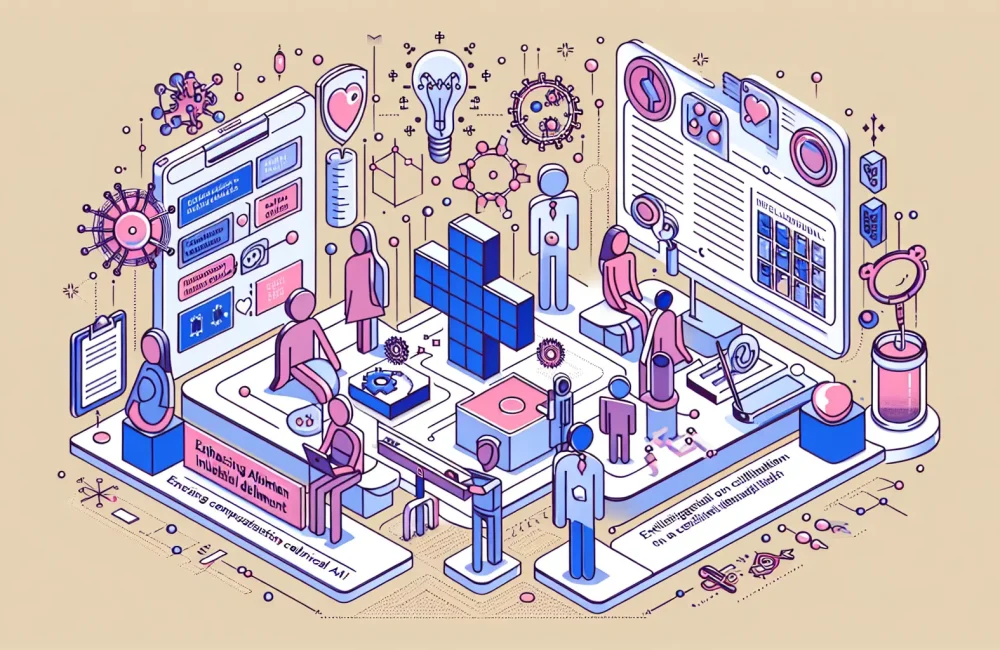By CAFMI AI From New England Journal of Medicine
Understanding the FAIRS Framework
The integration of artificial intelligence and clinical algorithms into healthcare is revolutionizing medical decision-making, but it also introduces significant challenges related to the inclusion of patient sex. Recognizing the critical importance of sex as a biological variable, the FAIRS model—Framework for the Assessment of Inclusion of Sex in clinical algorithms—offers a structured approach to evaluate how sex is incorporated into these clinical tools. It aims to ensure that algorithms not only reflect biological differences between sexes but also avoid biases that might lead to suboptimal or inequitable care. This is essential as many clinical algorithms have traditionally been developed and validated without adequate attention to sex-based variations, potentially compromising their accuracy or fairness in diverse patient populations.
FAIRS is multidimensional, examining five key aspects of algorithm development: data collection and quality, feature selection, algorithm design, validation processes, and outcome interpretation, all through the lens of sex inclusion. This comprehensive approach allows healthcare professionals and developers to identify gaps where sex differences may be overlooked or mischaracterized. The framework encourages transparency in reporting data sources and algorithmic methods to foster reproducibility and trust. By advocating for collaboration among clinicians, data scientists, ethicists, and patient representatives, FAIRS supports the development of clinical tools that are not only scientifically robust but also ethically sound and socially responsible.
Clinical Implications and Challenges in Sex-Inclusive Algorithms
Applying the FAIRS framework reveals several important challenges in current clinical algorithms concerning sex inclusion. A major issue is the underrepresentation or oversimplification of sex-specific differences in datasets used for algorithm training, which may result in biased predictions or reduced accuracy for certain patient groups. Moreover, a common problem is the conflation of sex and gender data, where algorithms fail to distinguish biological sex from gender identity, leading to potential misinterpretations and inappropriate clinical recommendations.
Another critical challenge highlighted by FAIRS is the insufficient validation of algorithms across diverse populations that represent different sexes, ages, and ethnic backgrounds. Without rigorous testing, algorithms might perform well in one group but poorly in others, exacerbating existing healthcare disparities rather than mitigating them. The framework stresses the need for meticulous evaluation to detect and correct these discrepancies. From a clinical perspective, addressing these challenges is pivotal to advancing personalized medicine: algorithms that correctly incorporate sex-specific nuances can improve diagnosis, treatment decisions, and prognosis, especially for conditions that disproportionately affect one sex.
Furthermore, FAIRS guides developers and healthcare providers in recognizing and mitigating ethical concerns surrounding the use of AI in medicine, such as perpetuating biases or reinforcing gender stereotypes. Incorporating sex as a variable in a nuanced and scientifically valid manner aligns with the goals of equitable and precise healthcare delivery.
FAIRS in Practice: Case Studies and Future Directions
Real-world applications of the FAIRS framework demonstrate its potential to significantly enhance the performance and fairness of clinical algorithms. Several case studies illustrate how careful consideration of sex led to improved detection and management of sex-specific conditions, such as cardiovascular diseases, autoimmune disorders, and certain cancers. For example, algorithms adjusted to account for sex differences in symptom presentation or disease progression yielded more accurate diagnoses and informed better treatment strategies, thereby enhancing patient outcomes.
The widespread adoption of FAIRS encourages continuous refinement of clinical algorithms, promoting an iterative process where tools evolve in response to new data and emerging knowledge about sex differences in health and disease. As healthcare increasingly embraces precision medicine, frameworks like FAIRS provide a critical roadmap for integrating complex biological variables into AI models responsibly and effectively.
For clinicians, the adoption of FAIRS means more than just better algorithms; it signals a shift toward more equitable healthcare practices that respect and reflect patient diversity. This includes counseling points that consider sex-specific risks and prognoses, recognizing red flags that may present differently across sexes, and tailoring follow-up protocols accordingly. In primary care workflows, these improvements translate to more personalized and proactive patient management, ultimately contributing to improved healthcare quality and reduced disparities across sex lines. The article advocates for broad collaboration and education to embed FAIRS principles into routine clinical practice and algorithm development, striving toward a future where AI-driven healthcare is both powerful and just.
Read The Original Publication Here






